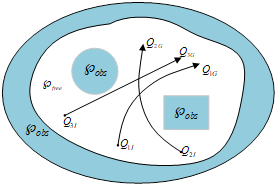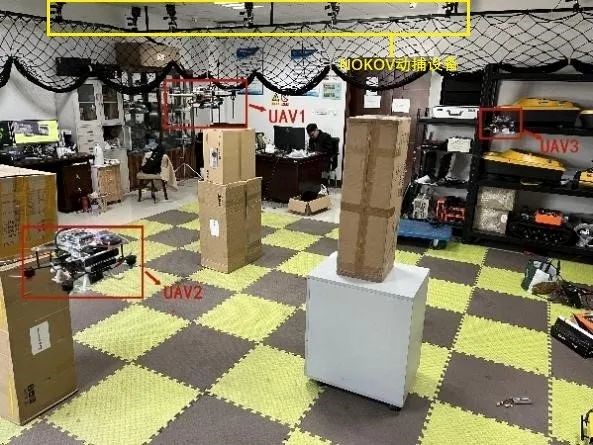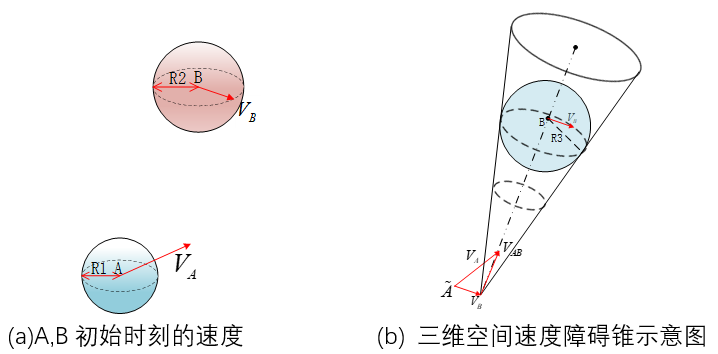In recent years, the role of UAVs has dramatically increased in performing tasks such as battlefield reconnaissance, target identification, tracking, and engagement. Collaborative execution of missions by multiple UVAs, facilitated by information exchange among UVAs, enables the achievement of global objectives and provides functionality and efficiency beyond that of individual UVAs. This method of using multiple UVAs for applications has become increasingly popular in UVA development.

Multi-UVA path planning in experimental setup
To ensure the efficient real-time operation of multiple UAVs, efficient path planning, including obstacle avoidance and collision avoidance, is a necessity. Multi-UVA online path planning allows UVA swarms to adapt to complex and dynamic environments, evade unknown obstacles, and enhance flight safety. Multi-UVA online path planning must consider not only the flight constraints and threat conditions of individual UVAs but also factors such as the number of UVAs, their functionalities, and the methods of coordination, creating a large-scale constrained multi-objective optimization problem.
Flight experiments
The team led by Lv Xunheng at the School of Automation, Nanjing University of Aeronautics and Astronautics, researched a multi-UVA online path planning algorithm based on an improved Hybrid A*. They constructed a simulation system and experimental platform to validate the algorithm's real-time capabilities and stability. The research findings were published at the 6th International Conference on Autonomous Systems in 2023.

Using the NOKOV motion capture system to collect the real-time positions of the UVAs
In the experiment, the UVAs were equipped with depth cameras to provide depth maps for perceiving the surrounding environment. The onboard computer was responsible for inter-UVA path information exchange and running the path planning algorithm. The NOKOV motion capture system was used to collect precise position information for each UVA.
The experiment's objective was to simultaneously provide target points for three UVAs, with the requirement that each UVA could safely reach its target point while considering constraints for obstacle avoidance and collision prevention.
The research team improved the traditional velocity obstacle model and introduced a three-dimensional velocity obstacle model suitable for 6-degree-of-freedom UVAs. This model was used to calculate the safe flight speeds of UVAs in three-dimensional space.

Schematic diagram of the 3D velocity obstacle model
Each UVA uses the Hybrid A* algorithm for distributed path planning. After planning the paths, collision risk assessment is conducted. If collision risks are detected, the safe flight speeds are computed based on the three-dimensional velocity obstacle model. These safe flight speeds are then used as optimization constraints. The path adjustments are made using a potential field method to achieve both obstacle avoidance and collision prevention effects simultaneously, ensuring that the UVAs can reach their target points safely while adhering to these constraints. This approach combines path planning, collision risk assessment, and velocity adjustments to enhance the safety and effectiveness of multi-UVA operations.

Schematic diagram of the Hybrid A* path planning algorithm
Experimental results
Each UVA performs online path planning, initially flying toward its target position. During the flight, it continuously checks for obstacles and evaluates the risk of collision with other UVAs. If there is a collision risk, the path is replanned. The UVAs continue to adapt their paths until they safely reach their respective target points, ensuring that they navigate around obstacles and avoid collisions with each other in real-time.

Real-time path results of indoor multi-UAV flight experiments
The three UVAs flew from takeoff to their respective target points, encountering multiple obstacles along the way. Each UVA adjusted its path to reach the target point while adhering to obstacle avoidance and collision prevention constraints.
Among them, UAV1 had a flight path of 8 m and an average speed of 0.8 m/s, UAV2 had a flight path of 15 m and an average speed of 1.1 m/s, and UAV3 had a flight path of 19 m and an average speed of 1.1 m/s.
The results indicate that using the algorithm proposed by the research team, multiple UVAs can perform online planning simultaneously. The planned paths adhere to the UVAs' kinematic constraints, allowing them to navigate around obstacles and effectively prevent collisions between the UVAs.
Bibliography: